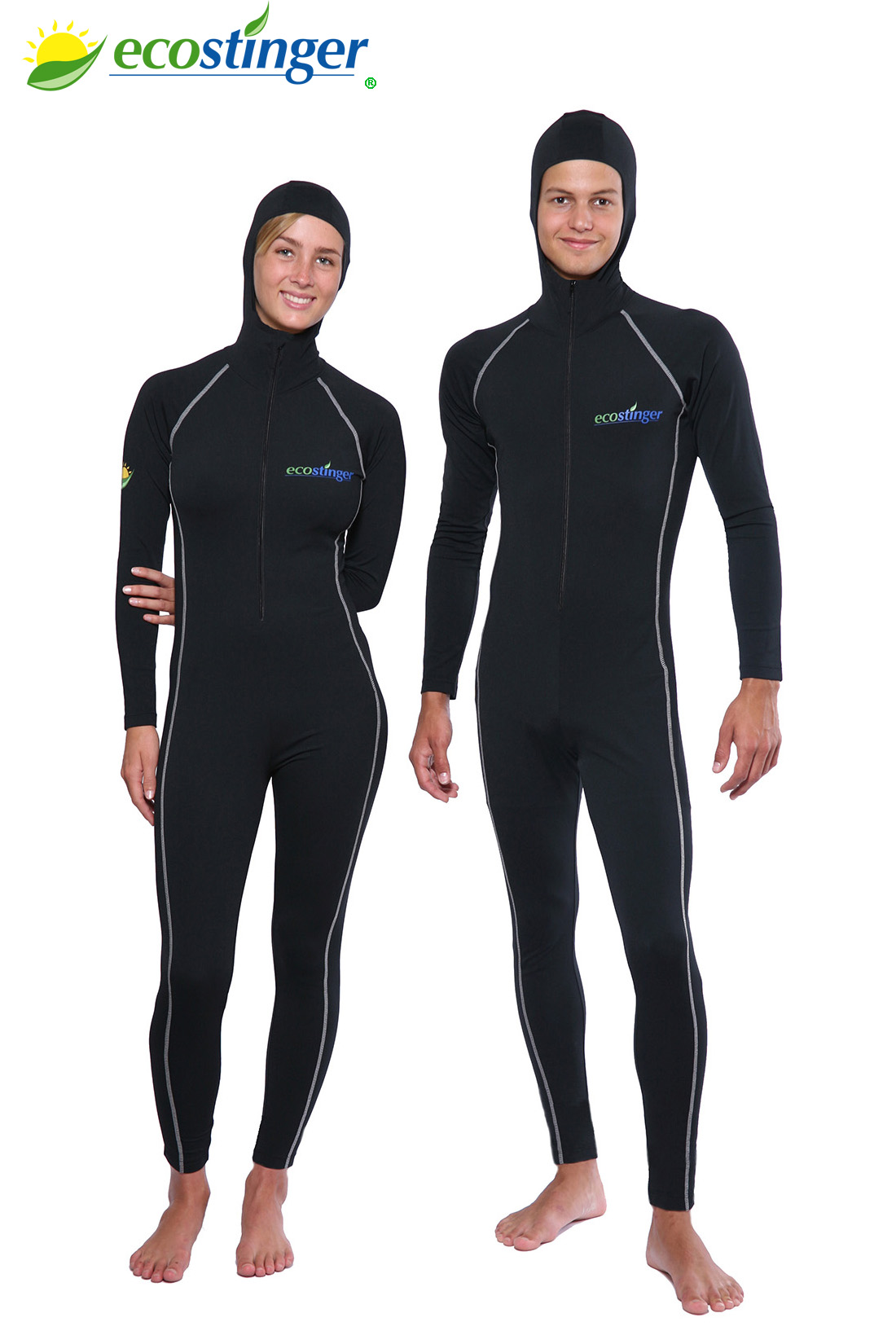What Is A Dive Skin?
Posted by ecostinger on 9th Jan 2017

Dive skin is a cloth specially designed and manufactured to protect the diver from the undercurrents of water as well as water animals. Dive skins are used while diving in water temperatures above 25 C (77 F). They are usually made from the Spandex or Lycra and give little heat protection but also protect the skin from being affected by the jellyfish stings also abrasion, and sunburn. Neoprene is a type of a synthetic rubber used in the manufacturing of a dive suit. Polymerization of chloroprene helps in the production of neoprene. It has a good resistance power in various temperature ranges under the ocean.
A lot is happening in the under waters always. Sometimes it could lead to abrasions, infections, stings and sunburns. So diving unprotected is not safe. The earlier attempt at preventing any infection in the water with the help of a fully enclosed suit made of rubber or leather complete with a helmet and inhaling and exhaling systems. The crude form then developed into a fully fledged dive suits that now help provide protection, safety, pressure resistance, heat resistance and lots and lots more. The diving suits happen to be made of spandex and latex and with innovations in technology; they cater to a far wider range than ever imagined before. Some suits act as temperature regulators; some suits add buoyancy, suits that maintain and manage pressure, suits exclusively for water sports and suits made of rubber, neoprene, PVC, recycled suits and lots more. The more sophisticated the art of diving, the more sophisticated the response of manufacturers of diving gear.
For those concerned with the economics of the diving gear, the dive skins are the best option. These happen to be the simplest of the diving suits and are also relatively easy on the pockets. Made of neoprene, these suits act as thermal insulators for the divers and can be used at a temperature of 10-25 degree Celsius. A small value of water does enter the suit but "flushing" of this water (warmed by the body heat) does not take place on a large scale. If the suit fits well, the water loss and consequently the heat loss are contained. Therefore, the effectiveness of a wetsuit springs from the snug fitting. The better the suit fits; the more the insulation.
There is a complete range of the the dive skin made out of recycled neoprene and designed with the up-to-date technology; these diving suits provide a greener gear that helps contain the ecological waste or at least reduce it. These are designed to provide almost all the features that one can think of in a good diving suit starting from the thermal insulation, double super seal neck, drain holes, firewall insulation, seamless designing, etc. But the essence of the the dive skin still lies in the size that one has chosen for himself or herself.
A suit must fit snugly to be able to avail the best of its features. A proper sizing of the suit can be determined from wetsuit size chart. It, however, is still recommended to try the gear practically. Any plus or minus in size can then be taken care of. The sizing is important while buying the accessories like hoods, gloves and other gear too.
The diving fear is no longer the run of mill dive skin bought with little thoughts other than the heat and abrasion resistance. It is now designed with helping enhance and uplift the overall diving experience and needs more than an errant thought.
